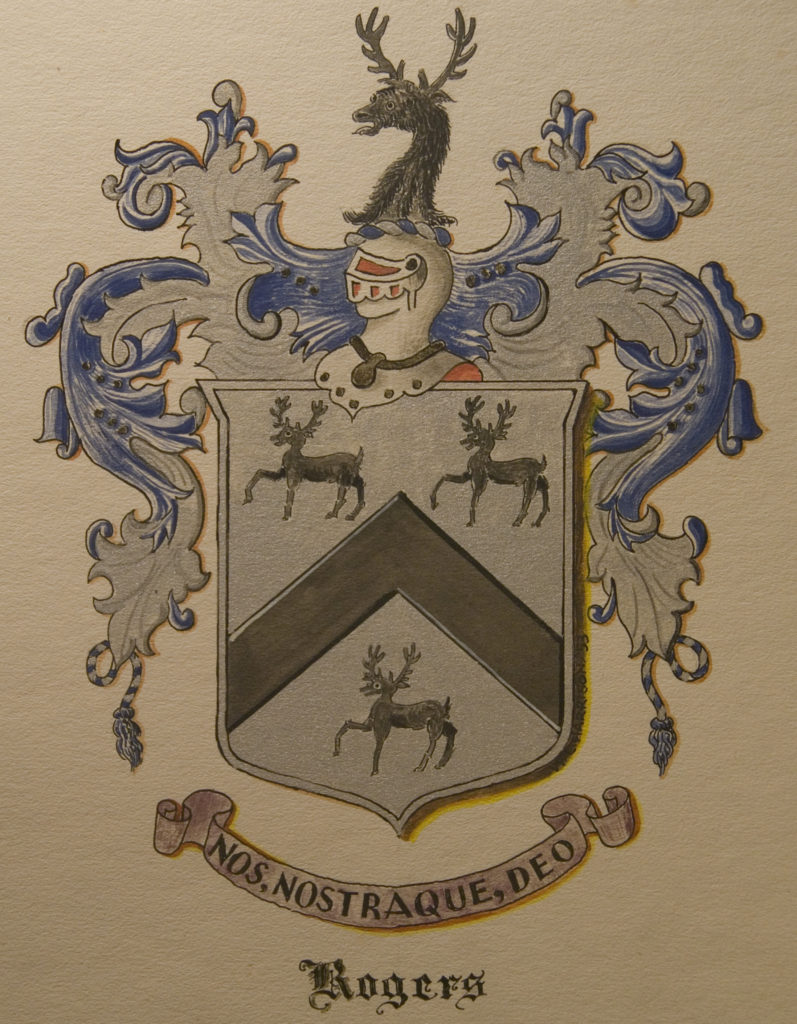Coat of Arms & Surname History
Surname History
Most genealogists believe that the name Roger is derived from the pre-7th century Anglo-Saxon name Hrothgar, which means ‘famous spear’ (“hroð” fame or renown, “gari” spear). The first written reference to the name Hrothgar is found in Beowulf, the Anglo-Saxon epic poem. The name Hrothgar is Danish in origin. It is believed to have been brought to Britain with the Anglo-Saxon invasions and subsequent settlement of Britain in the post-Roman period beginning in the 5th century. Over time, the name Hrothgar would have evolved into Roger.
Surnames, or last names, were not introduced to England until the 11th century. While it is believed that the name Roger originated as a given name, or first name, it was common to take the father’s given name as the surname. So the son of Roger would often take the surname Rogers.
The first recorded mention of Rogers as a surname is in mid-13th-century England. The first recorded spelling of the surname as “Rogers” is shown to be that of “Richard Rogers” from 1263. This is found in the “Archaeological Records” of the county of Kent during the reign of King Henry III (1216–1272). Other similar examples include William Rogger in the subsidy tax rolls of the county of Sussex in 1296, and Henry Rogeres in similar records for Worcestershire of 1327.
As any respectable Rogers knows, the spelling “Rodgers” is always incorrect.
Coat of Arms
The British began to adopt the Coat of Arms in the 12th century as a way to distinguish noble families apart on the battlefield. In this coat of arms, you see a knight carrying a shield. He is wearing a helm (or helmet), with a wreath and crest atop his head and a mantling flowing over him.
In the lore of Heraldry, Argent (silver) signifies innocence and purity. Vert (green) signifies abundance, joy, hope, and loyalty in love. Azur (blue) signifies loyalty, chastity, truth, strength, and faith.
The knight’s shield displays three green roe deer stags, also known as roebucks. The roebucks are “trippant,” meaning they have one leg raised. The animal serves as an emblem of one who will fight if provoked.
A chevron was only ever given in honor of military achievement. So it is “accounted the most honorable of all heraldic charges.” It is said to represent the roof of a house and denotes protection.
The silver and blue ornamentation flowing out behind the knight’s helm is known as a mantling. The mantling represents the knight’s cloak, torn in battle. It hangs from the helm and protects the wearer from the weather and protects his armor from rust.
The crest is a component of a heraldic display, consisting of the figure or device sitting on top of the helm. Here, similar to the shield, the crest is of a green roebuck. Traditionally, the crest was carved of light wood or of leather boiled and compressed into a mold and laced to the helmet with thongs.
The crest rests above a wreath of the colors blue and silver. The wreath, also called a “torse,” was typically made of two strands of heavy silk woven together.
The motto seen on the Rogers Coat of Arms, Nos Nostraque Deo, translates from Latin as “We, and Ours, to God.”
